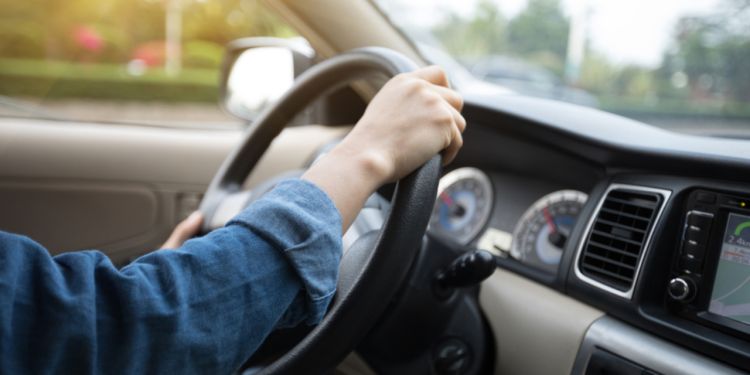Driving in China

With so much to see and so many new places to explore, you may be tempted to start driving in China right away. This country is home to a multitude of historical sights and urban attractions, as well as stunning landscapes beyond city borders. However, before getting behind the wheel, you will need to get a Chinese driver's license — a process that is not quite as simple as you might expect.
Your national or international driver's permit is, unfortunately, not valid in China. This means that you will need to get another driver's license, specifically to be able to drive in the country. Read on to learn about the process of getting a Chinese driver's license.
What you need to drive in China
First, to drive in China, you will need to obtain a residence permit. If you are not a resident of China, you are not allowed to drive.
If you have a residence permit in China and a driver's license in your home country, you can apply for a Chinese driver's license at your city's Vehicle Administration Office. Here are the required documents:
- a filled-in application form;
- passport and work permit (or other proof of residence in China);
- medical certificate from a designated hospital;
- your current driver's license with Chinese translation;
- and a photograph.
After you have submitted the documents, you will be required to take a theory test to re-qualify for a driver's license. The test typically includes 100 questions, and you will need to get over 90% of the answers correct in order to pass. In some cities, the test is offered in both English and Chinese.
However, in smaller towns, only a Chinese version of the test is available. In this case, you are allowed to bring along a translator or a Chinese-speaking friend to help.
Good to know:
Some people use this opportunity to get help with the test itself by bringing along an experienced driver or a paid test-taker. This is considered fraud and, if discovered, will disqualify you from the test.
If you have passed the test successfully, you will receive your Chinese driver's license within several working days.
If you don't yet have a driver's license in your home country and want to get one from scratch, the process for obtaining one will be mostly the same as for Chinese nationals. You will need to apply at the Vehicle Administration Office, submit the required documents, and take a written theory test. On top of that, you will also need to take driving lessons and pass several practice tests. Procedures may vary slightly depending on the city and province where you are taking the exam, but generally, it should take at least three months to get your driver's license.
Traffic rules and driving habits in China
Driving in China can be quite different from what it is in your home country. Traffic can be chaotic in urban areas, and some expats may find it difficult to adjust to the large number of vehicles on the roads, as well as peculiar driving habits exercised by some drivers.
China's official traffic laws are outlined in the Road Traffic Safety Law of the People's Republic of China, and it applies to all vehicles and drivers. However, the reality of the country's roads is often different, and traffic accidents are quite a common sight.
Driving in big cities is much more regulated compared to small towns. In towns and villages, you will also have to deal with a large number of motorcycles, which quite often tend to follow their own rules. On the other hand, big cities are inundated with shared bicycles and electric bikes, which often cause a nuisance on the road.
It is, thus, strongly advised that you exercise caution when driving in China, avoid rush hours and stay within the speed limits. If unfortunately, you have a traffic accident, it is customary for both parties to remain at the place of the accident until the police arrive, even if it's a minor bump.
Buying a car in China
Purchasing a vehicle in China is not particularly difficult — though you will be looking at higher prices (compared to the US and Europe) because of China's import tax.
However, getting a license plate and registering your car will be more complicated — especially in cities where the governments are working on curbing air pollution, such as Shanghai, Beijing, Shenzhen, Guangzhou, and some others.
In some of these cities, you will need to apply for a license plate even before you have purchased a car because the process is so lengthy and complicated.
Typically, to get a license plate in China, you will need to go through the following steps:
- Pay the car purchasing tax at the State Taxation Bureau. The tax amount is 10% of the vehicle's price.
- Purchase compulsory traffic insurance. You can buy the insurance at the same dealership where you've purchased the car or at an insurance agency.
- Visit your local Vehicle Administration Office (VAO). Here, you will get your car inspection patch and inspection certificate (these documents confirm that your vehicle has been inspected and any malfunctions have been discovered).
At the Vehicle Administration Office, you will need to provide the following documents:
- a receipt (or “fapiao“) for purchasing your vehicle
- a tax receipt
- an inspection certificate
- a receipt of your Compulsory Traffic Insurance
- a personal ID.
Next, you will fill in an application form and choose a license plate number. You will need to wait for about one month for your plate to arrive. As you wait, you also have the option to apply for a temporary license plate at the VAO. A temporary license plate is basically a sheet of paper with a random license plate on it, which you can place on your car window.
In smaller cities and towns across China, the above process should not take too much time. However, in a lot of first-tier cities, there are restrictions on how many license plates are given out to one household. This is done to combat pollution and control traffic.









